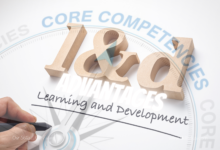
Talent Acquisition Strategies Ensure The Acquisition Of Creative Talents For Organizations
Talent acquisition is a long-term HR strategy that aims to meet organizational needs by finding the best talent and persuading them to bring their unique skills to the organization. Knowing that the fierce recruitment landscape and the growing demand for skilled labor greatly influence talent acquisition strategies. Therefore, HR professionals will need help ensuring continuity and control of talent acquisition activity. Thus, they must implement a long-term strategic plan to acquire and retain the best talent. Here are some essential strategies for talent acquisition:
1. Align the talent acquisition strategy to meet the goals and strategy of the organization
While hiring tends to focus on filling vacancies within departments, talent acquisition is more about expanding the organization in the long term and finding employees who can contribute to that. Therefore, HR professionals must develop a clear talent acquisition strategy for the coming years. Hence, aligning this strategy to meet the objectives and strategy of the organization. Ultimately, acquiring suitable and skilled talent will pay off for the organization in the long run.
2. Use of data and analytics
Talent acquisition should be treated equally to any marketing campaign for the organization and its products. Therefore, HR professionals must use data effectively to develop a robust talent acquisition strategy. For example, the data can be used to learn where the best talent comes from and to focus talent acquisition efforts on specific academic programs or professional networking sites. Also, HR professionals can ensure the organization’s appropriateness of job descriptions and job pages, know what obstacles and barriers prevent candidates from filling out employment applications, and eliminate them.
3. Expanding sourcing strategies
It is crucial to identify the sources where the vast majority of the best talent can be found, whether professional events, conferences, online forums, or social networks. Based on this, HR professionals can focus on building relationships and connecting with the right people. Thus, the organization must expand its sourcing strategies to find better talent.
4. Building a strong organizational culture
During the job search, research candidates keep track of their social media accounts, websites, and job boards to understand the organization’s culture. Knowing the organization’s strong culture can be one of its greatest strengths in hiring suitable candidates. Therefore, business leaders must ensure that the organization’s website and social profiles spread awareness of the organization’s culture robustly and appropriately. Thus, building an organizational culture that reflects a positive environment is an effective tool in talent acquisition strategy. Furthermore, an organization that focuses on the well-being and happiness of its employees and enables their professional growth and development is a desirable workplace.
5. Enhancing the organization’s social responsibility
The organization’s social responsibility leads to improving its image and the culture of the workplace and the general community. Therefore, it is considered an essential tool to attract the best candidates compatible with the values and beliefs of the organization. For example, if the organization is focused on diversity and inclusion and supports sustainability, this must be demonstrated and demonstrated through the organization’s content. Thus, strengthening the organization’s social responsibility can attract like-minded candidates who would be an improvement to work in it.
6. Take a flexible approach to business models
With the development of workforce skills in managing and using advanced technology, most will seek to take advantage of this development and achieve more balance between work and life. Therefore, organizations must adopt an agile approach by adjusting and considering integrating remote or hybrid working models. Knowing this will reduce costs in the old recruitment techniques and enhance talent acquisition strategies.
7. Design competitive compensation packages
Organizations designing competitive compensation packages that include, in addition to salary, comprehensive health benefits are likely to have a significant impact on attracting top talent. Numerous research and studies have shown that employees are always looking for excellent and comprehensive health benefits in job offers. Therefore, while implementing talent acquisition strategies, HR professionals must provide a comprehensive benefits plan that considers the organization’s business model that achieves a healthy work-life balance.
8. Promoting diversity as an actual model
The organization should promote diversity as an accurate model by educating on different traditions and cultural backgrounds. In addition, HR professionals must create internal human alliances to boost morale, which promotes building a diverse and inclusive culture in the workplace. Thus the organization will be seen as a workplace where different points of view are valued and expressed.
9. Partnership with academic institutions
Organizations partnering with academic institutions lead to building a pipeline of potential candidates. It also helps to establish a close and strong relationship between students and organizations in the future. Thus, instead of waiting for interested candidates to come to the organization, the organization can begin to establish relationships with potential candidates. Ultimately, this strategy attracts candidates after graduation and enhances organization retention.
10. Defining specialized technical roles to narrow the pool of candidates
The more specific the experience and projects the organization is looking for in candidates, the more successful it will have in finding exactly what it needs. But with the rise of intelligent transformation across organizations, employees in specialized technical roles need a tailored talent acquisition strategy. This will be based more on demonstrated skill tests and assessments than interviews and previous experience. Knowing that specialized functions can narrow the pool of candidates can make your outreach efforts easier. In addition, talent acquisition in specialized technical roles also requires a unique brand for the organization that crosses their skill set with a greater “sense of purpose.”
11. Succession planning
Succession planning consolidates and promotes employees internally rather than exiting the organization to fill vacant positions. Therefore, high performers must be identified within the organization, and sufficient time should be taken to train and prepare them to assume more responsibility and leadership in the future.
12. Ramping up the talent acquisition pipeline for mass recruitment
Group hiring is very different from hiring for a single role. So the talent acquisition pipeline must be ramped up without increasing costs while maintaining the quality of each candidate. The bulk recruitment strategy will include sourcing candidates, using software to automate repetitive tasks, and mass surveys to obtain the data needed to make hiring decisions.
13. A strategy dedicated to senior professionals
Finding the right candidate for a senior position is always a challenge, as they cannot afford the initial “teething period” available to entry-level workers. From their first day, senior employees are supposed to take charge and steer the organization toward success. This is why the organization needs a strategy tailored to senior professionals, with very different rules for recruitment and engagement. Therefore, it is preferable to collaborate with leading recruitment agencies to meet these talent acquisition requirements.
14. Internal Recruitment
Despite the significant increase in recruitment agencies and social recruitment websites, employee referrals are among the most preferred talent acquisition mechanisms. This is because candidates from internal sources are pre-screened for personality and culture fit, significantly reducing HR professionals’ workload. Therefore, internal recruitment results from talent acquisition best practices that encourage referrals throughout the organization and create an intelligent rewards program for those who refer potential employees.
Talent acquisition is an art, so mastering these strategies will paint a wonderful canvas of creative and innovative talents for organizations to thrive in.



